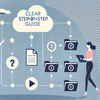
Nowadays, technical writing is a marketing tool. Online documentation contains keywords, it can be cross-linked with a corporate website, it gets branded. Your online documentation portal is indexed by all major search engines, and it shows up in search results for your clients. And, so, the term ‘target audience’ is quite common in technical writing, too. Who is this average person reading your manual? You better figure this out as it has great influence on the content you are going to create: complexity, terms, the language in general.
Let’s imagine that you’ve done the work, and here it is – you have your person of interest. A woman or a man of a certain age, from a certain country, with some background and profession, hobbies, maybe, even tastes and habits. It is all falling into place like a puzzle.
Everyone is buzzing about this, giving you tips and tricks how to figure out your TA, your average customer. And, this is great, of course, this makes everything more client-oriented, more personal. But why do we talk about inclusivity so seldom? Mind you, a company that creates contact lenses is well aware that most of their clients have eyesight issues, and, therefore, they are bound to adapt their technical documentation to these specifics. But the same people who are buying contact lenses buy a lot of other things, too. And, in the perfect world, all technical documentation must be equally accessible to them. Sadly, this is not always the case. The good news is – it is in our power to change this.
In this article, we are going to talk about inclusivity in technical documentation and give you some tips on how to make your user guides accessible to more people. This is the first post in the series. Today, we will concentrate on readers with dyslexia, in future posts, we plan to talk about user manuals for color blind people, visually impaired people.
What is Dyslexia?
According to NHS, dyslexia is “a common learning difficulty that can cause problems with reading, writing and spelling”.
This problem is extremely widespread, NHS states that 1 in 10 people in the UK has some degree of dyslexia.

Another important thing to know about dyslexia – it is a lifelong challenge. There is no known cure for it yet. It can be noticed in a young age, when children start to learn how to read and write. Dyslexic children write and read slower than their peers, have problems with written instructions, but they are absolutely fine with understanding them when told verbally. They can confuse letter order in words or mix up letters that are shaped similarly (‘b’, ‘d’).
A very important side note to make: dyslexia has nothing to do with intelligence.
Dyslexia causes challenges to arise every day. One of them is reading technical documentation. It can be simply exhausting for dyslexic people. User manuals often use a difficult technical language with a lot of terms and jargon. But, there is a way for technical writers to improve this situation. Keep reading to find out how.
Dyslexia and Technical Documentation
Now, we are going to give you some practical tips on how to make your user manuals more dyslexia-friendly. Making these small changes to your documentation will make a huge difference for dyslexic people. At the same time, such documentation is going to be easier to read and process for just about everyone, which is an awesome bonus.

Without further ado, here’s what you should pay attention to:
- Fonts matter. The best way to make your text more readable is using some popular fonts as they can be recognized by our brain easier. It got used to them.
- Give preference to sans serif fonts, as they stick to the original letter shapes more.
- Don’t let your font size drop below 12 points.
- The preferred line spacing would be 1.5.
- Dark font coloring on a light background is the best way to make your text more readable color-wise. Try avoiding white backgrounds though – they might be too contrasting.
- Use bold instead of italic if you want to emphasize something – most words when italicized look squished together, and it might be hard to separate the letters.
- Boxes are a great way of emphasizing parts of text. Some help authoring tools, like ClickHelp, can offer warning/information boxes as premade ready-to-use elements for your convenience.
- Don’t underline words. This, again, can cause confusion. It is a good thing that modern trends advise against underlining links in a text.
- Use lists. This really helps structure your content and makes processing it much easier.
- Speaking about text structure – by all means, use paragraph division. One paragraph should contain one idea. This will make your written content easier to read for everyone.
- Don’t write in long compound sentences. Keep sentences short and clear.
- Use your terms and jargon wisely. Always provide explanation. It can be done in a form of a glossary as a separate help topic, or you can provide definitions right on the spot.
- Be careful with abbreviations. Try avoiding them where possible or give explanations.
- Give a readability score service a try. Such services process your text and give you a score that shows how easy it is to understand your writing. We have a whole blog post about it, so check it out – Readability Score: Pros and Cons.
- Use images. They can be very helpful when explaining complex ideas. They also can support or supplement written text.
Conclusion
Living with dyslexia is an everyday challenge. But it doesn’t have to be that bad. And, with minor tweaks like the ones mentioned in this post, technical writers can make the world a better place to live for people with dyslexia.
We will continue talking about technical writing and inclusivity in our blog, stay tuned. Let’s try to make our user manuals more accessible!
Good luck with your technical writing!
ClickHelp Team
Author, host and deliver documentation across platforms and devices



